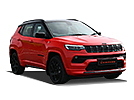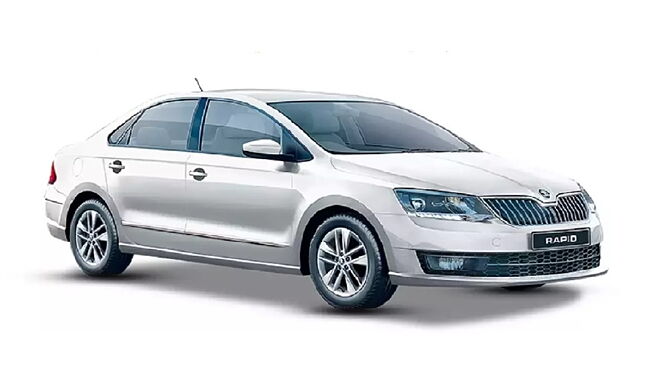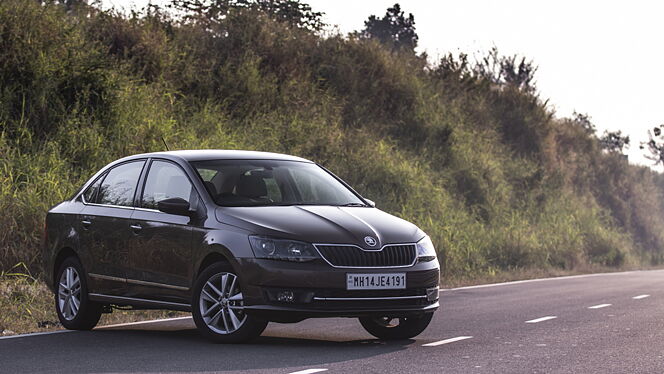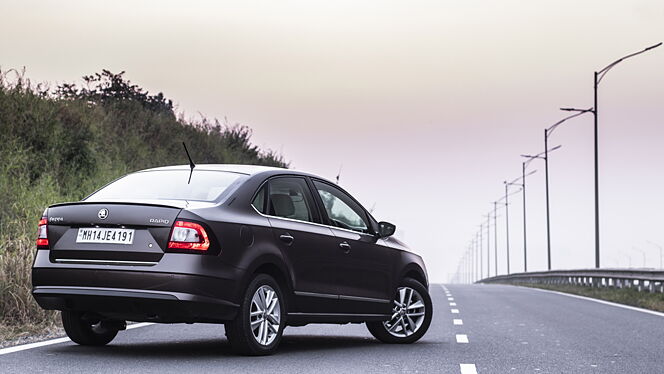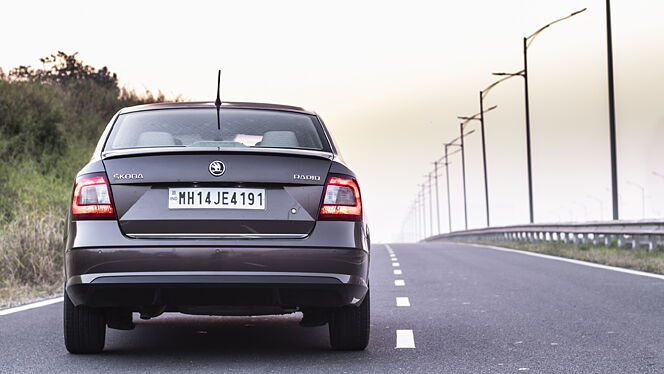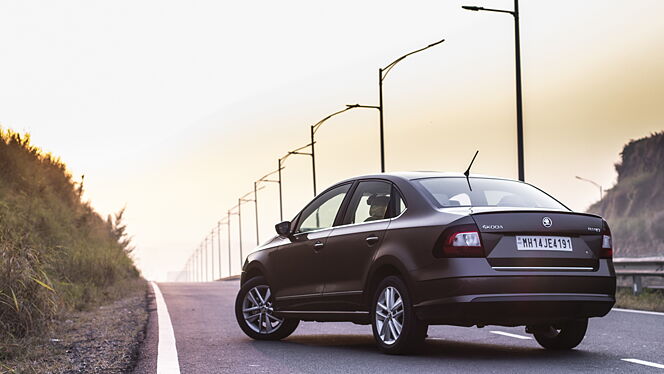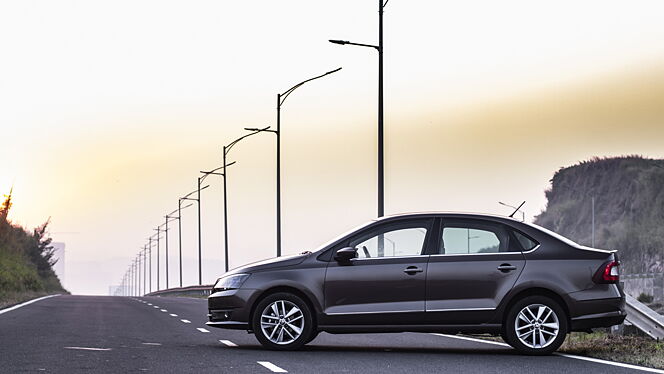Skoda Rapid TSI Monte Carlo
Skoda Rapid TSI Monte Carlo Summary
Skoda Rapid TSI Monte Carlo Review
What is it?
Why would I buy it?
Exciting power delivery, dynamically sorted
Why would I avoid it?
Looks and feels dated

The sedan may not be the most popular body style currently due to the ecstatic demand for SUVs. But we believe that the sedan not only has the upper hand when it comes to driving dynamics but also the nostalgic charm which simply can’t be matched by a high-rider.

For this review, we have none other than the new BS6 Skoda Rapid. Apart from the minor exterior and interior updates, the most significant change in the new Rapid is what’s under the bonnet. An all-new BS6 compliant one-litre three-cylinder turbo-petrol engine which replaced the older 1.6-litre petrol and 1.5-litre diesel powertrains.

Allow me to make it easier for you to spot the exterior differences in the new Rapid. It’s got what Skoda calls quartz-cut projector headlamps, and since our test version is the top-of-the-line ‘Monte Carlo’ trim (fancy name indeed!), it comes complete with an all-black grille and gloss-black ORVMs. There’s also a sleek tailgate spoiler which is finished in black, dual-tone alloy wheels and a ‘Monte Carlo’ badge that takes pride on the B-pillar. But you have to admit that although not as modern as the cars of today, the clean lines give the Rapid a confidently understated stance.
How is it on the inside?

Step into the new Rapid, and like earlier, you will appreciate the great build quality. But the familiar design, which once attracted with its uncluttered layout, now looks undeniably dated. On the flipside though, the ergonomically well-laid-out dash with large buttons allow one to get accustomed almost instantly.

Unique bits in this ‘Monte Carlo’ trim include the rather flashy leatherette upholstery and the flat-bottom steering with vivid red seams that are also seen on the gear lever boot. It also gets the ‘Monte Carlo’ inscribed scuff plates and cushions.
With respect to storage, there’s a tall cubby space in the centre console that also doubles up as a twin cup-holder. While the stowage inside the driver’s armrest can easily swallow a wallet or even a phone, there’s more space inside the door pad not just for a one-litre bottle alone, but also for your masks and sanitisers (current necessity). And, if these weren’t enough, the large glove box will certainly take care of the rest.

Another addition is the rather large eight-inch Skoda Android Infotainment system which sounds fairly okay. It has a high-res display with good touch-response and snappy frame rates. However, despite the user interface being based on Android, it takes time getting used to and is far from intuitive. Besides, the fact that the USB cable port is inconveniently placed in the glove box doesn’t help matters either.

On to the front seats now. While they offer good support and cushioning, one can easily arrive at a sweet driving position by simply adjusting the driver’s seat height, and the steering- both for rake and reach. The experience is further amplified by the generous headroom, loads of shoulder room, and the right amount of thigh support. At the rear, the bench is a comfortable place to be in thanks to a favourable backrest angle, ample knee room, and acres of foot room.

However, it could do with more thigh support, and although the headroom is just about okay for me (5-feet, 6-inch), it could get tight for taller occupants. That aside, there’s enough shoulder room for three average-sized adults to fit without a squeeze. Now, when it comes to boot space, there’s room not only for three medium-sized suitcases but all of your wife’s or kid’s shopping bags and soft toys. And because it's not an SUV, the low loading lip does not require one to lift the luggage far off ground.
How does it drive?

On to the most important update of the new BS6 Skoda Rapid. Replacing the ageing 1.6-litre petrol and 1.5-litre diesel is a new 1.0-litre, three-cylinder, turbo-petrol motor that makes 110bhp and a rather healthy 175Nm of torque. And unlike the earlier five-speed manual ‘box, this new mill uses a new six-speed manual transmission. For the record, Skoda has also promised an automatic gearbox later this year.

Off the mark what catches your attention is the rev-happy nature of the motor. There’s a nice, linear build-up of power which you can instantly spot as the tacho races swiftly to the rev limiter. Of course, you will notice some three-cylinder thrum, but seriously, who cares when there’s so much action to otherwise focus on.

All you have to do is keep the tacho-needle beyond 1600rpm, which is when the turbo goes on-boost. And from there on, the acceleration is simply a revelation to experience. With a mid-range that’s particularly strong, it pulls cleanly with no flat spots whatsoever until the 6500rpm limit. And boy, it sounds good while at it!
Citing the extraordinary, we strapped-on our VBox only to find out that it’s not only a shade quicker to 100kmph than the all-new Honda City, but it’s also a whole 2.4 seconds quicker in our all-important 40-100kmph drivability test (in fourth gear).

On the contrary, we spotted a rather dull response at slower speeds when the turbo is off-boost (ideally below 1400rpm), which can be a cause for frequent downshifting, especially in stop-and-go traffic. But nevertheless, the gears shift accurately through well-defined gates which are further complemented by a well-weighted clutch. If only the shifts felt a tad less rubbery.

As regards the steering, there’s just the right amount of heft- neither too light nor too heavy. But then, with around two-and, three-quarter turns from lock-to-lock, it's not what you’d term as quick. Yet it makes up by being fairly accurate. This gives one immense confidence to hold the intended line when driving fast around bends.

In terms of ride quality, the Rapid’s manners haven’t changed. It remains slightly stiff at slower speeds, which makes the ride slightly bumpy over our monsoon-battered roads. On the flipside though, up the pace, and the Rapid feels rock-solid as it tramples over most road imperfections, feeling unfazed and offering a flat ride mostly.

Should I buy one?

Sure the Skoda Rapid with all of its low-riding sedan-genes may not appeal to majority of the folks who prefer SUVs these days. What doesn’t work in the Rapid’s favour is that it isn’t loaded with all the new-age features that one has come to expect of modern-day cars. If truth be told, the minor makeup simply can’t hide the outdated looks, both inside and out.
But for what the Rapid is, it will seduce the breed that simply lives to drive. Those, who truly appreciate the hard-to-come-by blend of a performance-oriented motor that’s mated to thrilling dynamics. A concoction that proposes just the right amount of cabin space in a package that starts at only Rs 8.72 lakh (on-road, Mumbai for the Rider variant). I don’t know about you, but since I love driving, this is definitely the one for me!
Where does it fit in?

The new Skoda Rapid petrol M/T retails between Rs 8.72-13.91 lakh. For this kind of money, one can also plonk for a Maruti Ciaz that ranges from Rs 9.59-11.8 lakh, VW's Vento for Rs 10.53-14.39 lakh, the Hyundai Verna which is priced between Rs 10.81-15.02 lakh, and the all-new Honda City that costs Rs 13.03-15.41 lakh (All prices OTR Mumbai).
Pictures by Kapil Angane and Kaustubh Gandhi
Rapid TSI Monte Carlo Specifications & Features
- Specifications
- Features
- Specifications
- Features
Specifications
Engine & Transmission
- Engine999 cc, 3 Cylinders Inline, 4 Valves/Cylinder, DOHC
Timely services will keep a motor efficient and in top shape.
- Engine Type1.0 TSI
The official title given by the manufacturer in terms of the name of the engine, the displacement and the number of cylinders.
A bigger displacement and more than four-cylinders generally indicate a performance-oriented engine.
- Fuel TypePetrol
All cars in India either run on petrol, diesel, CNG, LPG or electric power.
- Max Power (bhp@rpm)109 bhp @ 5000 rpm
Gives a good idea of the performance of the vehicle under full thrust. A higher figure here usually means a higher top speed as well.
Higher the power, the peppier the engine but it can also affect fuel economy.
- Max Torque (Nm@rpm)175 Nm @ 1750 rpm
Relates to in-gear acceleration. A higher figure here means better roll-on acceleration, fewer gear shifts, and possibly better fuel efficiency.
The more torque at low RPM range makes the engine feel more responsive. It also allows the engine to run smoothly without too many gear changes.
- Mileage (ARAI)18.97 kmpl
This is the maximum fuel efficiency that an engine gives. All numbers are provided by the manufacturer based on tests conducted and specified by the standards of the ARAI (Automotive Research Association of India)
Such fuel efficiency attained while driving in special conditions makes it unlikely to get it in real-world conditions
- Driving Range1043.35 km
Approximate maximum number of kilometers which can be traveled on a full tank of fuel or fully charged battery
- DrivetrainFWD
Cars come with different drivetrain configurations depending on the segment.
Front-wheel drive (FWD) is most common in mainstream cars while expensive cars or SUVs come with rear-wheel drive (RWD) or all-wheel drive (AWD).
- TransmissionManual - 6 Gears
Type of transmission used to transfer power from the engine to the wheels
A manually operated transmission is the most popular type, thanks to its simplicity and low cost. Varied types of automatic transmissions are also available.
- Emission StandardBS 6
Set by the Indian Government, this governs the amount of air pollutants released by cars to make the atmosphere safer for humans.
- Turbocharger / SuperchargerTurbocharged
Manufacturers today offer turbochargers to boost engine power without affecting its fuel economy. Superchargers are found in more expensive cars but on the downside, they are not very efficient.
Turbochargers are more effective but require plenty of heat management. Superchargers, meanwhile, offer linear bump in power but they are comparatively more complex.
Dimensions & Weight
- Length4413 mm
The length of the car decides its segment. In India, cars that are less than 4 metres in length enjoy reduced excise duties.
- Length: 4413
Longer length results in more cabin space. It also adds to straight line stability.
- Width1699 mm
A car's width is defined as its widest point without its mirrors.
- Width: 1699
Although more width gives you more lateral space inside the cabin, it makes the car more difficult to park in narrow spots.
- Height1466 mm
The height of the car denotes the highest point of the vehicle from the ground.
- Height: 1466
Taller the car, the more headroom there is on offer inside the cabin. However, a tall boy stance also affect the car’s centre of gravity which can cause more body roll.
- Wheelbase2552 mm
The space between the center of the front and rear wheels.
- Wheelbase: 2552
The longer the wheelbase, the more space there is inside the cabin.
- Ground Clearance116 mm
It’s the space between the lowest point of the car and the ground.
- Ground Clearance: 116
If the car has a good amount of clearance, it’s easier for it to clear big speed breakers and overall, deal with bad roads.
- Kerb Weight1138 kg
The total weight of the vehicle with all the standard equipment and all the required fluids.
A lightweight car will always be more efficient and easier to manoeuvre whereas a heavy car would give you a sense of solidity while driving.
Capacity
- Doors4 Doors
The number of doors define the category of car. For example – four door means sedan, two-door means coupe while five-doors usually refer to a hatchback, MPV or an SUV.
- Doors: 4
- Seating Capacity5 Person
The number of people that can be seated comfortably in the car, which has also been mandated by the car manufacturer.
- Seating Capacity: 5
- No of Rows2 Rows
Smaller cars usually have two rows which can seat five, but some SUVs and MPVs have three rows and can seat around 7-8 passengers.
- Bootspace460 litres
Boot space defines how practical the car is with respect to how much luggage it can carry.
- Bootspace: 460
A boot with a large and wide opening is ideal for loading heavy items. Additionally, a lower loading height also makes it easy to put in luggage.
- Fuel Tank Capacity55 litres
The official volume of the fuel tank of a car, usually denoted in litres.
If a car has a large fuel tank, it can cover long distances without refuelling.
Suspensions, Brakes, Steering & Tyres
- Front SuspensionMcPherson suspension with lower triangular links and torsion stabiliser
Almost all cars in India use an independent front suspension which is usually the MacPherson Strut type.
- Rear SuspensionCompound link crank-axle
The rear suspension can either be non-independent or independent.
Most of the budget cars have non-independent suspension while the more expensive ones get independent rear suspension which offers better bump absorption.
- Front Brake TypeDisc
Most of the vehicles sold in India get ventilated or non-ventilated disc brakes upfront.
- The ventilated discs are more popular thanks to them providing better stopping power and it also works well in hot conditions.
- Rear Brake TypeDrum
In affordable cars, drums brakes are fitted at the rear as they are cost effective.
Disc setup at the rear is now getting more popular as cars are getting faster in the real world.
- Minimum Turning Radius5.3 metres
The official kerb-to-kerb minimum radius a car takes to complete a 180-degree turn.
Shorter the turning radius, the lesser space you need to make a tight turn or to take a U-turn.
- Steering TypePower assisted (Electric)
Almost all steering systems in cars today have an assist to help park them better at low speeds - these can be hydraulic, electro-hydraulic or electric.
- WheelsAlloy Wheels
The wheels used on cars are either steel rims with plastic wheel cover hub or alloy wheels on higher spec models or expensive cars.
Razor cut, or diamond cut alloy wheel design are not getting more popular. Manufacturers usually offer these in top-end trim of their car models.
- Spare WheelSteel
Important in a country with varying quality of roads, spare wheels ensure one doesn’t get stranded when one of the main tyres gets damaged.
Select premium car models feature space savers (smaller than the stock wheels) to save on boot space.
- Front Tyres195 / 55 R16
The profile/dimension of rubber tyre that fits on the front wheels.
- Rear Tyres195 / 55 R16
The profile/dimension of rubber tyre that fits on the rear wheels.
Features
Safety
- Overspeed Warning1 beep over 80kmph, Continuous beeps over 120kmph
Mandatory safety system for cars sold in India, a single beep is emitted after 80kmph and continuous ones after 120kmph
- Lane Departure WarningNo
This function detects when the car is drifting out of its lane and cautions the driver through audio/visual alerts
- Emergency Brake Light FlashingNo
The brake lights flash in a quick intermittent fashion to indicate to the following vehicles to slow down quicker than usual
- Forward Collision Warning (FCW)No
The driver is warned of an impending crash due to stopped/slowing vehicles ahead of them
- Automatic Emergency Braking (AEB)No
This system automatically stops the car if it senses an obstacle where the driver fails to take action
It is imperative to pay attention while driving and rely less on such systems
- High-beam AssistNo
This feature spots oncoming vehicles at night to shift the headlight between high and low beam
- NCAP Rating4 Star (Global NCAP)
The official crash test safety rating given to a car by one of the many testing agencies around the world
- Lane Departure PreventionNo
This feature automatically steers the car to prevent it from moving out of the lane when there is no driver input
- Dashcam-
A windscreen-mounted camera that records the frontal view. Its primary usage is to record and gather evidence in case of an accident. A dash cam can also be used to record incidents when the car is parked and the user is away. Certain models come with both front and rear view recording.
- Airbags2 Airbags (Driver, Passenger)
- Rear Middle Three Point seatbeltNo
Safer three-point seatbelts for passengers seated in the middle of the second row of seats.
Budget cars are usually fitted with more economical lap belts for the middle-occupant.
- Rear Middle Head RestNo
A headrest for the middle occupant of the second-row of seats.
Budget cars are usually not offered with headrests for the middle occupant of the second-row to save on costs. Headrests are instrumental in reducing whiplash injuries in case of an accident
- Tyre Pressure Monitoring System (TPMS)No
A digital gauge that provides the live status of the air pressure in every tyre of a car.
For accurate readings, ensure that the sensors on the rim are not tampered with during any wheel/tyre repairs
- Child Seat Anchor PointsNo
Anchor points or strap systems built into car seats to keep child seats in place, especially during a crash
ISOFIX is an international standard for child seat anchor points, but not all car manufacturers follow this standard
- Seat Belt WarningYes
Mandatory fitment in cars sold in India, emits loud beeps when it detects that occupants are not wearing their seatbelts.
Seat belt warning is mandatory for front-seat occupants, but it is recommended that all occupants wear seat belts.
Braking & Traction
- Anti-Lock Braking System (ABS)Yes
An electronic system that prevents the tyres from locking and skidding in emergency braking situations by pulsing the brakes (quickly releasing and reapplying the brakes)
ABS is a great accident prevention technology, allowing drivers to steer while braking hard
- Electronic Brake-force Distribution (EBD)Yes
An electronic system that redirects braking forces among the four brakes to stop the car as quickly and stably as possible
- Brake Assist (BA)Yes
A system that increases brake pressure to help the car stop quicker
Even when emergency braking, it is observed that drivers don’t apply maximum brake pressure through the pedal, the BA system provides additional pressure to help stop the car quicker
- Electronic Stability Program (ESP)No
System designed to improve car stability and control, especially when the car is accelerating.
ESP or ESC cannot increase traction but rather improve control or help regain control in slippery conditions.
- Hill Hold ControlNo
A feature that prevents the car from rolling backwards when stopped on a slope
- Traction Control System (TC/TCS)No
This system cuts power to those wheels that are spinning without grip/traction
Given the option, keep traction control on all the time.
- Limited Slip Differential (LSD)No
This function prevents wheelspin and maximises traction by shuffling torque between wheels
It is also a nifty safety feature since it offers more control over a vehicle's power delivery
- Differential LockNo
Locking differentials split power/torque evenly among both tyres on an axle.
In off-road vehicles, locking differentials allows for better traction when one of the wheels is in the air, in FWD/AWD cars allows for better corner traction and in RWD sports cars allows for drifting around corners.
Locks & Security
- Engine ImmobiliserYes
A security device that prevents the engine from being started unless the key is present
- Central LockingRemote with Boot Opener
This feature let's one unlock all the doors remotely or with a key
- Speed Sensing Door LockYes
This feature automatically locks the car's doors when it reaches a preset speed
A convenient feature for those who can't remember to lock the doors
- Child Safety LockYes
Such locks are built into the rear doors to prevent rear seat occupants from opening the doors
Comfort & Convenience
- Air PurifierNo
Used to improve the air quality within the cabin by removing contaminants
- Electronic Parking Brake-
- Air ConditionerYes (Automatic Climate Control)
The different types of air-conditioning systems used to cool the cabin
Maintaining the lowest temperature and first blower speed offers the best results.
- Front ACSingle Zone, Common Fan Speed Control
- Rear ACBlower, Vents Behind Front Armrest
- HeaterYes
This feature allows warm air to pass through the air-con vents for heating the cabin
- Vanity Mirrors on Sun VisorsCo-Driver Only
Compact mirrors fitted to the inside of the sunvisor
- Cabin Boot AccessNo
The option of being able to access the boot space while sitting inside the car
- Anti-glare MirrorsElectronic - Internal Only
These mirrors negate the glare from headlight beams of cars behind you
Since a large chunk of people love driving around in their high beam, these mirrors come in handy
- Parking AssistReverse Camera
A feature that aids drivers park with ease and greater precision using sensors/cameras
It comes as a boon for drivers who are not used to parking in tight spots
- Parking SensorsRear
Sensors that are usually located on the bumpers of a car to assist/alert the driver while parking
It takes the stress out of manoeuvring in confined spaces
- Cruise ControlYes
A system that automatically controls the speed of the car
- Headlight and Ignition On ReminderYes
An alert that warns one from leaving the car with the headlight and ignition switched on
- Keyless Start/ Button StartNo
When fitted, this system allows the car to be switched on without removing the key from the driver’s pocket or vicinity.
Keyless entry and start/stop (KESS) systems in some cars also include operation via a smartphone.
- Steering AdjustmentTilt & Telescopic
A function where the steering wheel moves up/down, in/out as per the driver's requirement
When both rake and reach adjustments are incorporated, it makes for a tailormade driving position
- 12V Power Outlets2
This socket provides current to a cigarette lighter style 12 volt plug
It helps charge smartphones, tablets, laptops, rechargeable batteries and other USB chargers. It also powers a compressor that inflates tyres and the humble cigarette lighter!
Mobile App Features
- Find My CarNo
An app based feature that allows one to find where their car is located/parked
- Check Vehicle Status via AppNo
The requisite app will provide information regarding various functions such as speed and fuel alerts
- Geo-fenceNo
A service that triggers actions like notifications and security alerts when a car enters/leaves a set location
- Emergency CallNo
A call that's made automatically by the car to the local emergency services in the event of a crash
- Over The Air (OTA) UpdatesNo
Similar to how smartphones receive updates, a vehicle too (if equipped with connected car features) receives updates over the air via a cellular or WiFi connection
Timely installation of updates keeps the system up-to-date
- Remote AC: On / Off via AppNo
The smartphone app turns on the car's AC to attain the required cabin temperature even before one boards it
More so comes in handy when cabin temperatures are extreme before you board the vehicle
- Remote Car Lock/Unlock via AppNo
The smartphone app allows one to remotely lock/unlock the car's doors from just about anywhere
This function is helpful when the key fob isn't working properly
- Remote Sunroof: Open / Close via AppNo
The smartphone app lets you remotely open/close the sunroof of your car
This function saves valuable time by not having to be physically present to shut the sunroof, which could otherwise result in the interiors getting damaged by rain/intruders.
- Car Light Flashing & Honking via AppNo
The smartphone app sounds the horn and flashes the headlights of your car so that you can locate it
- Alexa CompatibilityNo
Alexa is a virtual assistant technology that allows voice interaction to perform various tasks
An invaluable function that allows the driver to keep their eyes on the road
Seats & Upholstery
- Driver Seat Adjustment8 way manually adjustable (seat forward / back, backrest tilt forward / back, headrest up / down, seat height up / down)
- Front Passenger Seat Adjustment6 way manually adjustable (seat forward / back, backrest tilt forward / back, headrest up / down)
- Rear Row Seat Adjustment2 way manually adjustable (headrest up / down)
Rear seat adjustments make for an enlarged luggage space when there's lots of baggage to haul.
- Seat UpholsteryLeatherette
When it's time to replace, use a fabric that grips and are inherently cool to the touch
- Leather-wrapped Steering WheelYes
Leather not only grips your palms well, but it also offers a premium feel
- Leather-wrapped Gear KnobYes
- Driver ArmrestYes
The armrest located between the front passengers which helps comfort the driver's arm while driving
- Rear Passenger Seat TypeBench
- Ventilated SeatsNo
Cooled air from the AC system passes through the perforations on the seat to comfort the occupant
- Ventilated Seat TypeNo
- InteriorsSingle Tone
Depicts if the cabin comes with a single or dual-tone colour scheme
- Interior ColoursBlack
The various color shades used within the cabin
- Rear ArmrestYes
- Folding Rear SeatNo
Some rear seats have the option to be be folded to offer more practicality
- Split Rear SeatNo
Sections of the rear seat are capable of being folded down separately
This function bumps up practicality as the boot space increases when required.
- Front Seatback PocketsYes
The pockets behind the front seats which help rear seat occupants store their stuff
- HeadrestsFront & Rear
The portion extending from or fixed to the seat that supports the head
Storage
- Cup HoldersFront & Rear
- Driver Armrest StorageYes
The storage space within the armrest that's located between the front passengers
- Cooled GloveboxYes
A feature where cool air from the air-conditioner is diverted to the glovebox
- Sunglass HolderNo
Doors, Windows, Mirrors & Wipers
- ORVM ColourBody Coloured
Mirrors that are placed on the car's exterior, around the door, to aid the driver see behind the vehicle
Placing/sticking wide-angle mirrors on the ORVMs can enhance the rear view tremendously.
- Scuff PlatesMetallic
This is fitted where the door meets the frame to protect it from scratches and dust
Not using scuff plates may result in the door sill giving away prematurely.
- Power WindowsFront & Rear
When the car's windows can be raised/lowered by pressing a button/switch
In emergencies where the power window electronics have jammed, exit the vehicle by kicking out the windscreen
- One Touch DownAll
This feature allows a user to roll down the windows with a single press of a button
This feature reduces the time your hand is away from the steering wheel
- One Touch UpAll
This feature allows a user to roll up the windows with a single press of a button
This feature reduces the time your hand is away from the steering wheel
- Adjustable ORVMsElectrically Adjustable & Retractable
Different ways of adjusting the door mirror to suit the driver's requirement
Tremendously aids driving judgement in a variety of tight situations.
- Turn Indicators on ORVMsYes
Turn indicators are fitted to the door mirrors for improved visibility
- Rear DefoggerYes
A feature that removes condensed water droplets from the rear windscreen to improve visibility
Turning air recirculation off helps gain faster results.
- Rear WiperNo
Although a seemingly minuscule feature, it negates the hatchback's/SUV's inherent ability to retain dirt/water on the rear windscreen.
- Exterior Door HandlesBody Coloured
- Rain-sensing WipersYes
When the system detects water droplets on the windshield, it activates the wipers to improve driver visibility
This feature can be intrusive especially while you are negotiating a tricky bend at a higher speed
- Interior Door HandlesChrome
- Door PocketsFront & Rear
- Side Window BlindsNo
These protective shields keep the sun's rays from affecting the occupants
With restrictions on darker sun films, these blinds are a huge relief on sunny days.
- Bootlid OpenerElectric Tailgate Release
The various methods of opening the boot lid
- Rear Windshield BlindNo
A manually/electrically operated, usually translucent, screen designed to reduce the sunlight filtering into the cabin through the rear windshield to improve rear-cabin comfort and privacy
Exterior
- Sunroof / MoonroofNo
Ensure the sunroof is closed before exiting the vehicle to prevent dirt/rain from entering the cabin
- Roof-mounted AntennaYes
The compactness of the roof-mounted antenna prevents its damage in certain situations
- Body-coloured BumpersYes
Having parking sensors will save your bumper paint if it brushes by obstacles
- Chrome Finish Exhaust PipeNo
- Body KitNo
Functional or purely aesthetic parts added to the car's body such as side skirts and roof/bonnet scoops
- Rub-stripsNo
A strip of rubber fitted to the sides of the car's doors or bumpers to prevent dents and dings
Opt for quality strips because the cheaper ones tend to come off too soon/look shabby.
Lighting
- Ambient Interior Count-
- HeadlightsProjector with Xenon
- Automatic HeadlampsYes
Such headlights automatically switch on and off when they sense bright or dark driving conditions
Keeping them switched on at all times gives the user the best results
- Follow Me Home HeadlampsNo
The headlamps remain lit for sometime when the car is locked/unlocked to aid user visibility in dark surroundings
- Cornering HeadlightsPassive
These lights turn left and right based on steering inputs to illuminate the sides of the car
- TaillightsHalogen
Inspect tail lamp bulbs at periodic intervals for optimum safety.
- Daytime Running LightsLED
Lights that automatically switch on during the day for increased visibility
- Fog LightsHalogen on front, Halogen on rear
A type of lamp that improves driver visibility while driving through fog
The yellow/amber fog lights are preferable as they are warm to the eyes and do not reflect from the fog.
- Ambient Interior LightingFootwell Lamps
Additional lighting apart from the roof-mounted courtesy/map lamps. These are added for a sense of style and luxury rather than utility.
- Puddle LampsNo
Incorporated into the bottom section of a car's door mirrors, they light up the ground underneath the front door when the door is unlocked
- Cabin LampsCentre
- Light on Vanity MirrorsNo
A lamp that's located around the vanity mirror behind the sun visor
- Rear Reading LampYes
- Glovebox LampYes
- Headlight Height AdjusterYes
Allows adjustment to the height of the headlight beams via a switch on the dashboard
Instrumentation
- Instantaneous ConsumptionYes
It indicates how much fuel is being used that very instant your car is moving
- Instrument ClusterAnalogue - Digital
A screen situated mostly behind the steering wheel displaying information and warning lights regarding the car's various vitals
- Trip MeterElectronic 1 Trip
- Average Fuel ConsumptionYes
The amount of fuel consumed by the engine (kmpl) is displayed on the instrument cluster in real time
A glance will help you maintain better fuel efficiency and save money
- Average SpeedYes
The total distance traveled divided by the time taken to cover that distance
The higher the average speed, the quicker you were on that journey/trip
- Distance to EmptyYes
The approximate distance a car will run with the amount of fuel remaining in the tank
- ClockDigital
- Low Fuel Level WarningYes
This alert should be taken as a final warning to head straight to the fuel pump
- Door Ajar WarningYes
A warning light that pops up on the instrument cluster when the doors are not shut properly
- Adjustable Cluster BrightnessNo
The brightness of the instrument cluster can be adjusted via controls
It comes in handy to improve instrumentation visibility between day and night by toggling brightness.
- Gear IndicatorYes
It notifies the driver about which gear the car is being driven in and can also suggest down- or upshifting to improve efficiency
- Shift IndicatorDynamic
Notifies the driver about the optimum instances to shift gears
It comes in handy to derive the best fuel efficiency and engine component longevity
- TachometerAnalogue
An instrument that measures engine speed in revolutions-per-minute (rpm)
Ideally, the tachometer helps a driver know when to shift gears in a manual gearbox.
Entertainment, Information & Communication
- Android AutoWired
An Android feature that allows car infotainment displays to mirror parts of the phone screen to ease touch operations while driving.
- Apple CarPlayWired
An Apple (iOS) feature that allows car infotainment displays to mirror parts of the iPhone screen to ease touch operations while driving.
This function bumps up the safety quotient since the use of a smartphone while driving can be hazardous
- DisplayTouch-screen Display
A touchscreen or display that acts as a user's interface to the various functions of the car
- Touchscreen Size-
- Gesture ControlNo
The ability to recognise and interpret specific movements of the occupant to perform functions without any direct contact with any of the car's switches or buttons
- Integrated (in-dash) Music SystemYes
The music player that comes factory fitted
- Speakers6
Number of speaker units as part of a car’s surround-sound system
- Steering-mounted controlsYes
The widely-used controls are placed on the steering wheel to ease driver usage
- Voice CommandNo
When the car's system responds to the occupant's voice to perform certain features
- GPS Navigation SystemYes
A system that uses satellite signals to help the driver with directions to reach a destination
- Bluetooth CompatibilityPhone & Audio Streaming
Allows devices with bluetooth functionality connect wirelessly to the car's infotainment system
Using Bluetooth functionality offers a cable-free experience
- AUX CompatibilityYes
The car's music player can play tracks off a portable device via an aux cable
Bluetooth can make AUX cables look ancient, but unlike the former, there's hardly any loss in sound quality
- AM/FM RadioYes
Is the music system's capability of playing broadcasted radio channels
If radio signals are weak, one can stream music
- USB CompatibilityYes
When tracks can be played from a USB/pen drive
- Wireless ChargerNo
These pads can charge equipped smartphones without using a cable
Given the option, opt for fast wireless charging.
- Head Unit SizeNot Available
The size of the music system fitted to a car. Traditionally 1-DIN or 2-DIN, are being replaced by touchscreen units of varying sizes.
- iPod CompatibilityYes
- Internal Hard DriveNo
The storage device within the car's infotainment system
- DVD PlaybackNo
The capability of the infotainment system to play DVDs
Manufacturer Warranty
- Battery Warranty (In Years)Not Applicable
The number of years the EV battery is covered under the manufacturer's warranty
More the years, the better
- Battery Warranty (In Kilometres)Not Applicable
The number of kilometres the EV battery is covered under the manufacturer's warranty
More the kilometres, the better
- Warranty (In Years)4
The automaker can void the vehicle's warranty if the owner has fitted aftermarket components.
- Warranty (In Kilometres)Unlimited
The automaker can void the vehicle's warranty if the owner has fitted aftermarket components.
Other Rapid TSI Variants
| Variants | Price | Specifications | |
|---|---|---|---|
Rs. 12.00 Lakh | 5 Person, FWD, 175 Nm, 116 mm, 1138 kg, 460 litres, 6 Gears, 1.0 TSI, No, 55 litres, 1043.35 km, No, No, Front & Rear, 4 Star (Global NCAP), 4413 mm, 1699 mm, 1466 mm, 2552 mm, 175 Nm @ 1750 rpm, 109 bhp @ 5000 rpm, Remote with Boot Opener, Yes (Automatic Climate Control), Front & Rear, 1, Reverse Camera, Wired, Wired, 0, No, Yes, No, 2 Airbags (Driver, Passenger), Yes, 0, BS 6, 4 Doors, 18.97 kmpl, Petrol, Manual, 109 bhp | Get Offers from Dealers |
Rapid TSI Alternatives




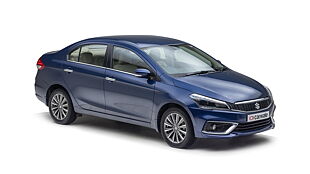

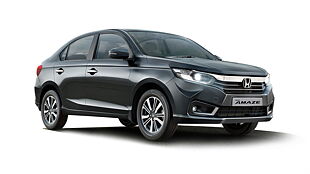
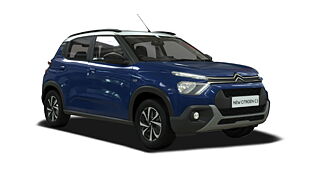
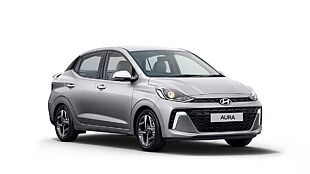
Explore Used Skoda Rapid
Skoda Rapid TSI Monte Carlo Reviews
- (13 Ratings) 7 Reviews
4.1/5
- Skoda Rapid Monte Carlo 1.0 TSIIt is very nice and the TSI is just next level. I love the infotainment system but it doesn't support Apple CarPlay or Android Auto. So when the Gas pedal is on the floor my head goes banging on the seat and the g-force I experience is so powerfulRating parameters(out of 5)5
Exterior
5Comfort
5Performance
4Fuel Economy
5Value For Money
About the ReviewerPurchase NewDriven forFew thousand kilometersRead MoreWas this review helpful?00 - Drivers delight , 0 to 100 in 9.81. Buying experience was a great received car in one day, and service was great, got a massive discount, 2. The driving experience is great, steering feedback is great it's not artificial like Hyundai, you will feel confident at high speed and loves corners, bends and turns, 3. Performance is best in the segment, it is fastest in the segment, the pull is great, 0 -100 in 9.8, a top speed of 200, engine loves to be rev, overtaking is effortless, turbo spools at 1900-2500 rpm, the exterior doesn't feel dated coz of evergreen design, today's gizmos are missing but the Interior is practical, you get. Black cabin in Monte Carlo, rear space is average, space is good for 4 , the boot is good, built quality is great, 4. Services intervals is around 15k , cost around 8k to 9k , 5.pros are it's a good round package, great performance, driver's delight, built quality, cons are service and expensive partsRating parameters(out of 5)5
Exterior
4Comfort
5Performance
4Fuel Economy
4Value For Money
About the ReviewerPurchase NewDriven forFew thousand kilometersRead MoreWas this review helpful?33 - Economy carEconomy car and budget car the Skoda rapid give the best performance and mileage also according to the businessman who takes the car daily, where it has many life of engine like our Tata Indica best car and it's suited for both all the ageRating parameters(out of 5)4
Exterior
5Comfort
5Performance
5Fuel Economy
5Value For Money
About the ReviewerPurchase NewDriven forFew thousand kilometersRead MoreWas this review helpful?10
Rapid TSI Monte Carlo FAQs
- Home
- Skoda Cars
- Rapid TSI
- Monte Carlo

